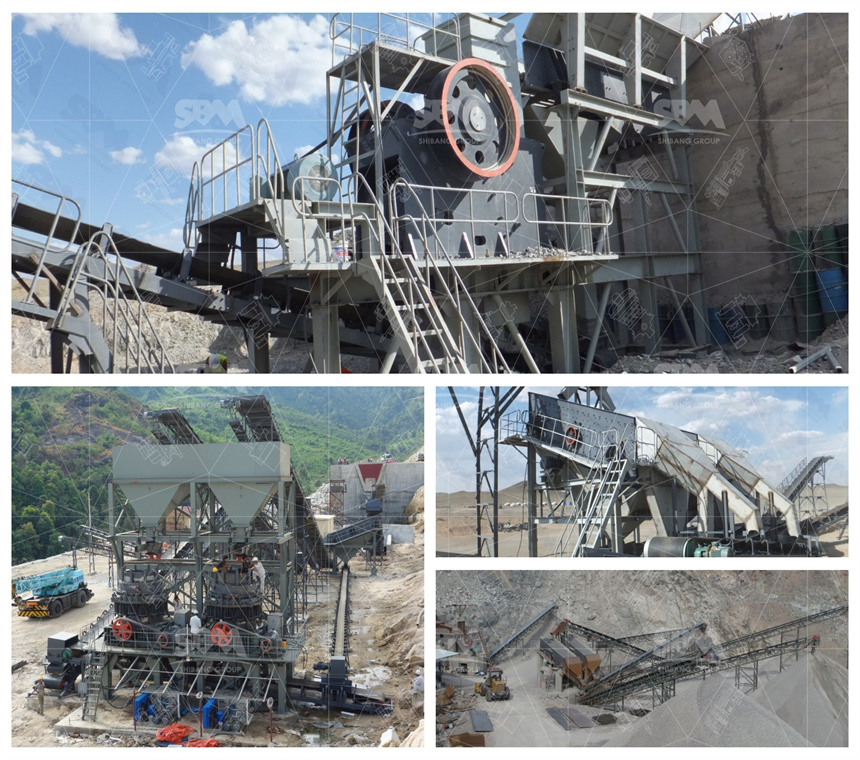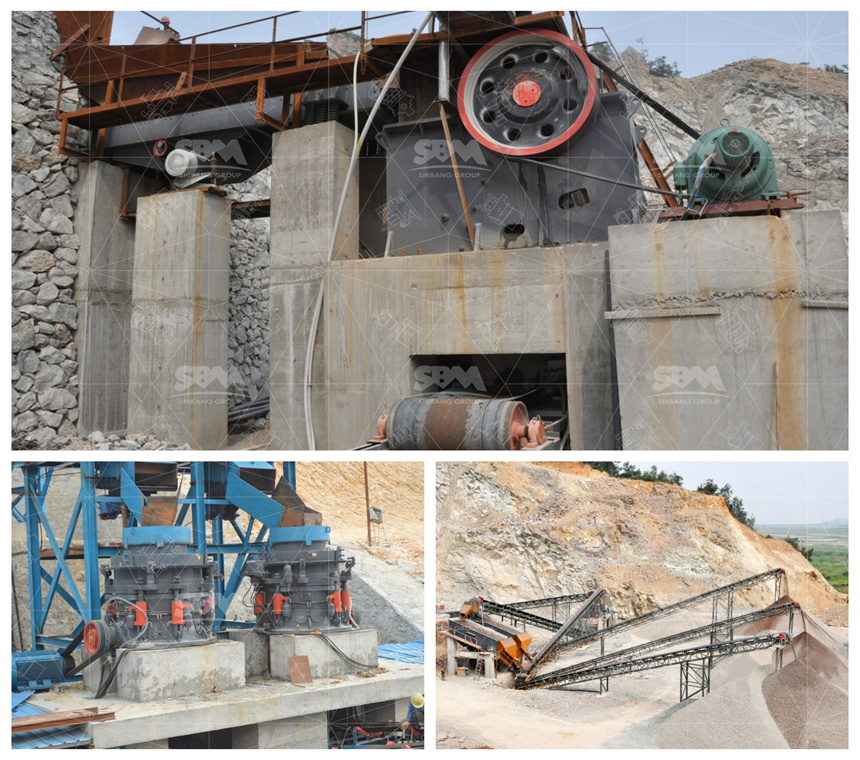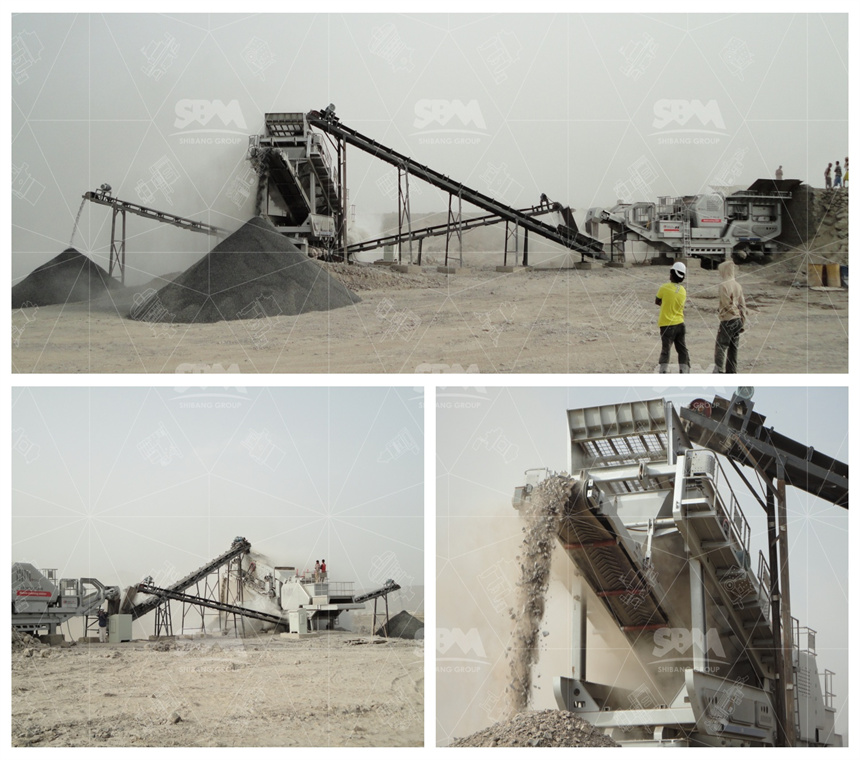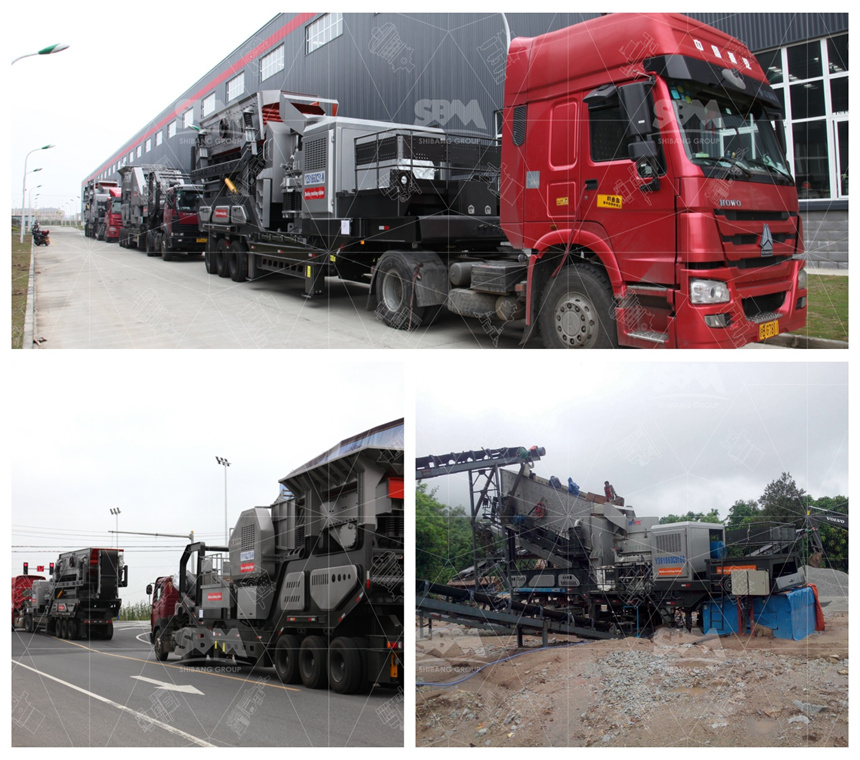This article explains a compact, field-proven crusher plant layout for producing aggregates and manufactured sand for building works. It covers definitions, operating principles, key technical parameters, equipment list, measured running data, maintenance routines, and selection advice. The content is based on verified product datasheets and case records.

A crusher plant reduces quarried rock, recycled concrete, or industrial by-product into graded aggregates and sand for construction. It is, fundamentally, a staged comminution train that transforms large feed into controlled, specified output. Therefore the plant’s aim is consistent: high throughput, stable particle shape, and predictable gradation.
Primary reduction uses a jaw crusher that nips and compresses feed. Secondary and tertiary stages commonly use cone crushers or impact crushers. In these stages material is broken by compression or impact until it reaches the discharge gap set. Importantly, the closed-side setting (CSS) — the smallest gap in the crushing chamber — controls final size and must be stable for quality.
Each major machine has defined roles. The vibrating feeder meters feed. The jaw crusher performs coarse break by a reciprocating swing jaw. The cone crusher crushes with a rotating mantle and concave; hydraulic adjustment controls the discharge. Screens classify product, and conveyors move material. Motors, drives, and lubrication systems power the chain.
Always verify: maximum feed size, capacity (t/h), discharge range, motor power, rotational speed, and adjustment range of the discharge port. For example typical jaw models show feed up to 1,200 mm and capacities from 1 to 1,200 t/h. Cone models span feed sizes from ~120 mm to ~480 mm and capacities from tens to over one thousand t/h. Match motor power and gearbox ratings to rated torque, to keep the drive within 40%–100% of rated horsepower for reliability.

Below is a compact specification table for a mid-size building-aggregate plant (examples adapted from manufacturer datasheets).
| Machine | Model / Typical Feed (mm) | Capacity (t/h) |
|---|---|---|
| Vibrating feeder | GZD-650×2300 / ≤300 | 80–100 |
| Jaw crusher (primary) | PE1200×1500 / ≤1,020 | 800 |
| Cone crusher (secondary) | SC250S / 360 | 225–524 |
| Vibrating screen | 4YK2160 / multi-deck | various |
Notes: the table uses representative models and ranges. Actual selection must use verified datasheets for exact power and dimensions.
Feed → primary jaw → secondary cone → tertiary shaping/impact (if needed) → multi-deck screening → finished stockpiles. To control particle shape, include a sand-making rotor (VSI) or tertiary impact stage. Screen cutpoints and recirculating ratios define the final gradation. Keep the cone CSS steady; variations cause grading drift and variable fines.
From verified site records, typical running indicators for similar plants are: specific power consumption 5–25 kWh/t depending on rock hardness; planned availability 92%–97% with correct maintenance; mean time between liner replacement 2,000–6,000 operating hours (material and chamber matter); fault rate under 2 incidents per 1,000 operating hours for core drive systems when proper lubrication is used. These numbers reflect practical projects and factory test data.
Proactive checks: daily inspection of wear parts, eight-hour shift checks on bearing temps, weekly oil sampling, and scheduled liner rotations. Operate cones in a choke-fed mode for steady wear and cubic products. Keep drive loads between 75%–95% for best efficiency; avoid trickle feeds. These procedures lower downtime and extend component life.

Energy use varies widely. Primary jaw stages are lower kWh/t than tertiary shaping. For hard granite, expect higher specific energy. Therefore, optimize staged reduction and reduce over-crushing. Additionally, correct rotor selection in impact stages reduces wear and energy losses. This cuts OPEX and improves total cost per ton.
Quick tests to run on commissioning: gradation sieve analysis, Los Angeles abrasion, and proctor tests for sand compaction. Establish baseline sieve curves daily for two weeks. Use these baselines to tune CSS, screen apertures, and recirculation ratios. This is practical and repeatable on site.
Case A — Indonesia limestone line: a fixed plant with a PE1200×1500 jaw, SC cone, multi-deck screens delivered 800 t/h of graded aggregate (0–80 mm), feeding ≤1,020 mm rock. The operator reported smooth operation for 18 months.
Case B — Singapore granite plant: a tertiary single-cylinder cone (SC series) and screens produced cubical 5–20 mm with 500 t/h capacity. The client noted low maintenance and high uptime.
Case C — India construction-waste recycler: mobile cone system processed 200 t/h of mixed concrete rubble, producing 10–30 mm road base. Mobility reduced transport costs and enabled multi-site service.
Step 1: Define feed size and hardness. Step 2: Set target gradation and capacity. Step 3: Choose primary type — jaw for large feed, gyratory only for very high throughput. Step 4: For secondary use cone when hardness is high; use impact for softer or friable rock. Step 5: Add VSI if sand shaping required. Step 6: Size drives so rated power runs at 75% nominal under design load. Follow these steps and verify with test crushing.
Design goal: 300 t/h of 0–20 mm aggregate from granite, feed ≤300 mm. Recommended line: GZD feeder → PE primary (capacity 400 t/h) → SC cone (capacity 250–500 t/h) → VSI (if required) → 3-deck screen. Anticipate specific power ~12 kWh/t and recirculation 15% to meet gradation. Validate with a 72-hour trial run and adjust CSS and screen apertures.
Always start with a trial feed. Secondly, record power and amperage every shift. Thirdly, keep spare liners for 30–45 days of consumption. Fourth, install remote monitoring for bearing temps. Fifth, train operators on choke feeding and on-line adjustments. These steps improve yield and reduce surprises.

Risk: sticky or wet feed that bridges screens and clogs chambers. Mitigation: pre-wash or trommel screening. Risk: tramp metal. Mitigation: install grizzly and magnetic separation. Risk: poor gradation. Mitigation: add a sizing circuit and adjust recirculation ratios. These are standard controls used daily on plants worldwide.
Prefer suppliers with ISO9001 and CE style certificates, and with long export history and documented case studies. Verified machine test reports and on-site performance logs are essential for claims verification. Therefore always request factory test sheets and after-sales support terms before purchase.
In summary, to build a robust plant for building materials, choose a proven jaw for primary, sized cones for secondary, and controlled screening. Moreover ensure CSS stability, choke feed the cones, and keep scheduled lubrication. Finally, run a short commissioning test with full production feed to finalize CSS and screen settings. These measures yield reliable output, low OPEX and consistent product quality.
Whatsapp:+8617329420102
Email: [email protected]
Address: No. 1688, Gaoke East Road, Pudong new district, Shanghai, China.
Online Service : Get Price
We value your feedback! Please complete the form below so that we can tailor our services to your specific needs.
